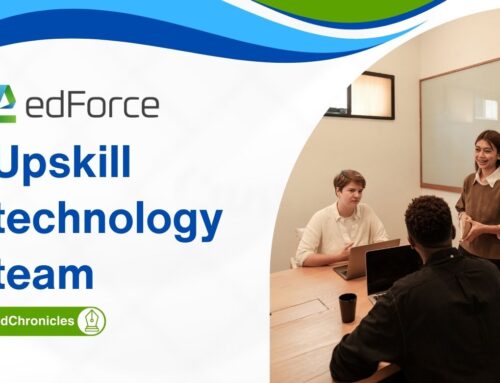In today’s fast-paced and rapidly evolving business landscape, workforce upskilling has emerged as a central strategy for companies committed to remaining competitive and driving sustainable growth. As technological advancements, shifting market demands, and the need for specialized skills continue to reshape industries, the importance of investing in employee development has never been more apparent. Businesses are realizing that without continuous skill enhancement, their teams may struggle to meet new challenges or adapt to change, leading to diminished productivity and a weaker competitive edge. Upskilling goes beyond mere skill-building; it fosters a culture of learning, empowers employees, and aligns their growth with organizational goals. Companies that prioritize upskilling not only improve job satisfaction and retention but also gain the agility needed to innovate and respond proactively to industry shifts. This article explores the critical role of workforce upskilling in today’s business environment, highlighting its far-reaching benefits for both employees and organizations. Additionally, we’ll discuss how leading upskilling partners like edForce are enabling businesses to implement effective, tailored training programs that equip their workforce with the skills needed to drive continuous growth and transformation in an increasingly complex world.

The Importance of Workforce Upskilling
Workforce upskilling refers to the process of equipping employees with new skills or enhancing their existing skills to meet the ever-changing demands of their roles. This approach is not just about training for the sake of it; it’s about strategically aligning employee development with the organization’s goals and the industry’s future needs.
In a world where digital transformation is accelerating at an unprecedented pace, companies that fail to upskill their workforce risk falling behind. According to a study by the World Economic Forum, over 50% of all employees will need reskilling by 2025, as the adoption of technology increases and the nature of jobs changes. This highlights the urgency for businesses to proactively invest in upskilling to remain competitive.
Benefits of Workforce Upskilling
1. Increased Employee Productivity
Upskilling leads to a more competent and confident workforce. Employees who are well-equipped with the latest skills and knowledge are more likely to perform their tasks efficiently and effectively. This, in turn, leads to higher productivity levels, which is crucial for any organization’s success.
2. Enhanced Employee Retention
Investing in the professional development of employees not only boosts their skills but also their loyalty to the company. Employees are more likely to stay with an organization that values their growth and provides opportunities for career advancement. This reduces turnover rates and saves the company from the high costs associated with recruiting and training new employees.
3. Improved Innovation
A workforce that is continually learning and evolving is better positioned to drive innovation within the organization. Upskilled employees bring fresh ideas and perspectives, enabling the company to innovate and stay ahead of the competition.
4. Better Adaptability to Change
In today’s dynamic business environment, the ability to adapt to change is critical. A workforce that is regularly upskilled is more agile and capable of adapting to new technologies, processes, and market shifts. This adaptability is a key factor in maintaining a competitive edge.
5. Attracting Top Talent
Organizations that prioritize workforce upskilling are more attractive to top talent. In a competitive job market, potential employees are drawn to companies that offer continuous learning and development opportunities. By building a reputation as a learning-focused organization, companies can attract and retain the best talent in the industry.
How edForce is Leading the Workforce Upskilling Revolution
As businesses recognize the need for workforce upskilling, many are turning to specialized organizations like edForce to help them achieve their goals. edForce is a leading provider of corporate training solutions, offering a wide range of upskilling programs tailored to the unique needs of businesses across various industries.
edForce understands that each organization has its own set of challenges and requirements when it comes to upskilling its workforce. That’s why they offer customized training programs that align with the company’s strategic objectives. Whether it’s enhancing technical skills, developing leadership capabilities, or fostering a culture of continuous learning, edForce provides comprehensive solutions that drive measurable results.
One of the key strengths of edForce is its ability to deliver training that is both relevant and engaging. Their programs are designed to be interactive and practical, ensuring that employees can immediately apply what they’ve learned in their day-to-day work. This approach not only enhances the learning experience but also maximizes the return on investment for the organization.
Moreover, edForce leverages the latest technology to deliver training in a flexible and accessible manner. With options for online, in-person, and hybrid learning, employees can upskill at their own pace and in a way that fits their schedules. This flexibility is particularly important in today’s remote and hybrid work environments, where traditional training methods may no longer be effective.
In addition to providing top-notch training, edForce also offers tools and resources for tracking and measuring the impact of upskilling initiatives. This data-driven approach enables organizations to monitor progress, identify areas for improvement, and ensure that their upskilling efforts are aligned with their business goals.
Strategies for Effective Workforce Upskilling
To maximize the benefits of workforce upskilling, companies must approach it strategically. Here are some key strategies to consider:
1. Identify Skill Gaps
The first step in any upskilling initiative is to identify the skill gaps within the organization. This involves assessing the current skills of employees and comparing them with the skills required to meet future business needs. By identifying these gaps, companies can tailor their training programs to address the specific areas where development is needed.
2. Align Upskilling with Business Goals
Upskilling should be aligned with the organization’s strategic objectives. This means that the skills being developed should directly contribute to the company’s goals, whether it’s driving innovation, improving customer service, or expanding into new markets. By aligning upskilling efforts with business goals, companies can ensure that their investment in training delivers tangible results.
3. Leverage Technology
Technology plays a crucial role in effective upskilling. Online learning platforms, virtual classrooms, and AI-powered learning tools are just some of the ways that companies can deliver training in a flexible and scalable manner. Leveraging technology also allows for personalized learning experiences, where employees can focus on the skills that are most relevant to their roles.
4. Foster a Culture of Continuous Learning
Upskilling should not be seen as a one-time event but as an ongoing process. To create a culture of continuous learning, companies should encourage employees to take ownership of their professional development. This can be achieved by providing access to a variety of learning resources, setting aside time for learning, and recognizing and rewarding employees who actively engage in upskilling.
5. Measure and Adjust
Finally, it’s important to track the progress of upskilling initiatives and make adjustments as needed. This involves collecting data on training participation, skills development, and business outcomes. By regularly reviewing this data, companies can identify what’s working, what needs improvement, and make informed decisions about future upskilling efforts.
The Future of Workforce Upskilling
As the business landscape continues to evolve, the need for workforce upskilling will only become more critical. The rapid pace of technological advancement, coupled with the increasing demand for specialized skills, means that companies must be proactive in their approach to employee development.
Looking ahead, we can expect to see a greater emphasis on personalized learning experiences, where employees have access to customized training programs that are tailored to their individual needs and career aspirations. Artificial intelligence and machine learning will play a significant role in this, enabling companies to deliver more targeted and effective upskilling.
Furthermore, the rise of remote work and the gig economy will necessitate new approaches to workforce upskilling. Companies will need to find ways to upskill not only their full-time employees but also their remote and contract workers. This will require greater flexibility in how training is delivered and a focus on building skills that are relevant across different work environments.
workforce upskilling is no longer a luxury but a necessity for businesses that want to thrive in today’s competitive landscape. By investing in the continuous development of their employees, companies can drive productivity, innovation, and growth, while also positioning themselves as leaders in their industry. Organizations like edForce are at the forefront of this movement, providing the tools, resources, and expertise needed to navigate the complexities of upskilling and achieve lasting success.
FAQs
Q1) What is workforce upskilling?
Ans: Workforce upskilling refers to the process of enhancing the skills of employees to meet the evolving demands of their roles and the broader industry. It involves training and development programs that are strategically aligned with the organization’s goals.
Q2) Why is workforce upskilling important for businesses?
Ans: Workforce upskilling is crucial for maintaining a competitive edge in the market. It increases employee productivity, fosters innovation, improves adaptability to change, enhances employee retention, and attracts top talent.
Q3) How does edForce contribute to workforce upskilling?
Ans: edForce offers customized training solutions that align with the specific needs of businesses. They provide flexible learning options and use the latest technology to deliver relevant and engaging training programs, helping companies achieve their upskilling goals.
Q4) What are the key strategies for effective workforce upskilling?
Ans: Key strategies include identifying skill gaps, aligning upskilling with business goals, leveraging technology, fostering a culture of continuous learning, and measuring and adjusting upskilling efforts based on data.
Q5) What is the future of workforce upskilling?
Ans: The future of workforce upskilling will likely involve more personalized learning experiences, greater use of AI and machine learning, and new approaches to training remote and gig workers. Companies will need to be proactive and flexible in their upskilling strategies to keep pace with the changing business landscape.






